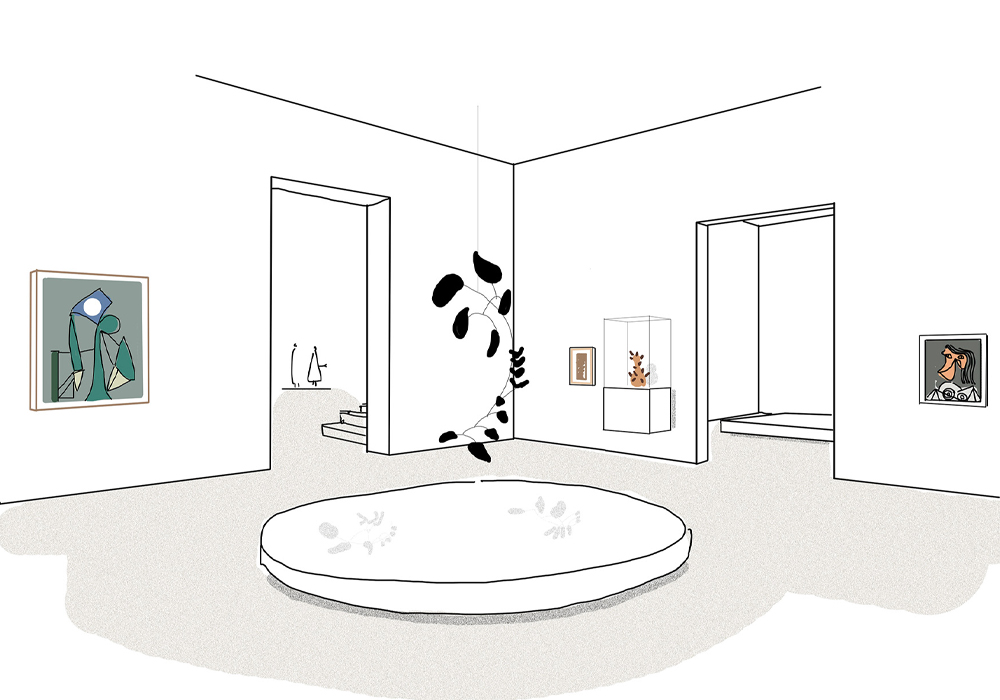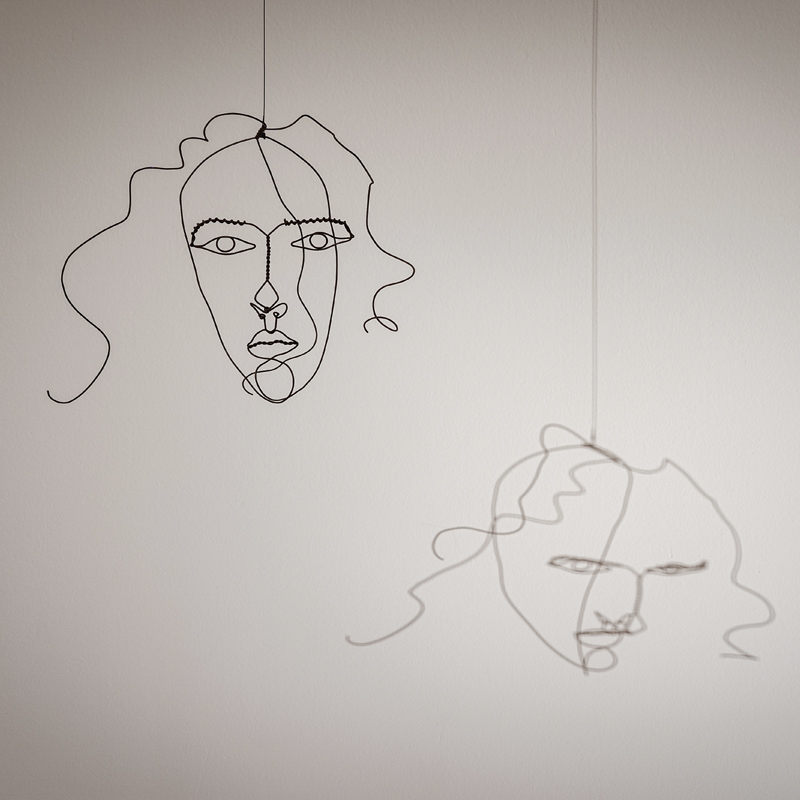
The exhibition talks about the creative dialogue between two artists when studying the void. Calder and Picasso worked the vacuum, but … how do we show that? How to value works of art of such importance so that they express what the artist who created them really intended to express?
Our great little success and starting point for solving the exhibition design was to quickly understand that the artists were Calder and Picasso, not us. It seems as if from the first day you enter an architecture school you are taught that the architect tends to say “here I am”, this is my personal seal. If you don’t see my personality at work, I haven’t done well.
Here we set out our work to go unnoticed, the works of art we had in our hands were so good that “only” we had to know how to enhance what they expressed, put them in value. Being architects from silence and the background.
The intention was always to group all the pieces in the exhibition into “rooms” or “exhibition sets” that spoke of the same thing. The exhibition, although its main theme is essentially emptiness, is structured in several different moments and approaches that the artists had on the subject.
Our small and discreet architectures try to be the support of these groups so that the viewer, almost without realizing it, can better understand the specific artistic dialogues that the curators of the exhibition wanted to emphasize in each block.
The entire montage of the exhibition design is intended to be a narrative support to let the protagonists speak, therefore we thought of a collection of solutions that emphasize and highlight the works of art.
Because of the lightness of many of the pieces on display, one of the challenges was to give presence to objects that are almost invisible. In the exhibition there are several works that have been built with thin wires, which float from the ceiling without taking up almost space. That is why in the exhibition design you can see discrete but resounding architectural elements such as a platform on the floor, or floor-wall, which underline these delicate works fulfilling several functions at the same time:
- – Define an own space for the work, so that suddenly an object that without its platform would be lost in a room, now is hierarchize, locate …
- – Enhance the perceptual size of the work. The observer psychologically understands the work + the platform as a whole. A work on the ground would not be perceived as large as on an element that expands its perimeter scope spatially.
- – Group several works when you want to do it like this. The platform will be like a perceptive element that will tell the viewer that all the objects on it go together.
- – Keep the public at a safe distance from the work, to avoid the great temptation to touch them, … or blow them to see how they move!
- – And one thing we loved, playing with the shadows. Our platforms are also screens on which to cast the shadow of the art work itself, discovering beautiful games between the object and its projection.
For those who have the opportunity to visit the exhibition before its final closure, take a look at one of our favorite pieces, a small 1929 sculpture of Alexander Calder in the shape of a fish floating discreetly close to a wall, and check the game that there are sculpture and the projection of its shadow. What is more important? The piece, its projection? The space between the two? The feeling of emptiness that surrounds the fish or that makes up the fish itself.
Suddenly we understood that we could also be part of the works of art! The void that forms a sculpture on its exhibition platform, the space created around the pieces, is part of the work of art.
In the end, after a long process of work in which countless factors had to be taken into account that we did not imagine at the beginning, we managed to survive our exhibition design debut in the most dignified way we knew how. Surely with mistakes, as in all our works, but with great learning along the way. Architecture for me is not a way to pursue any specific goal, but a set of uncertain processes in which to discover all kinds of surprises, like being surprised by the beauty of the shadow of a small twisted fish-shaped wire on a wall White.



































